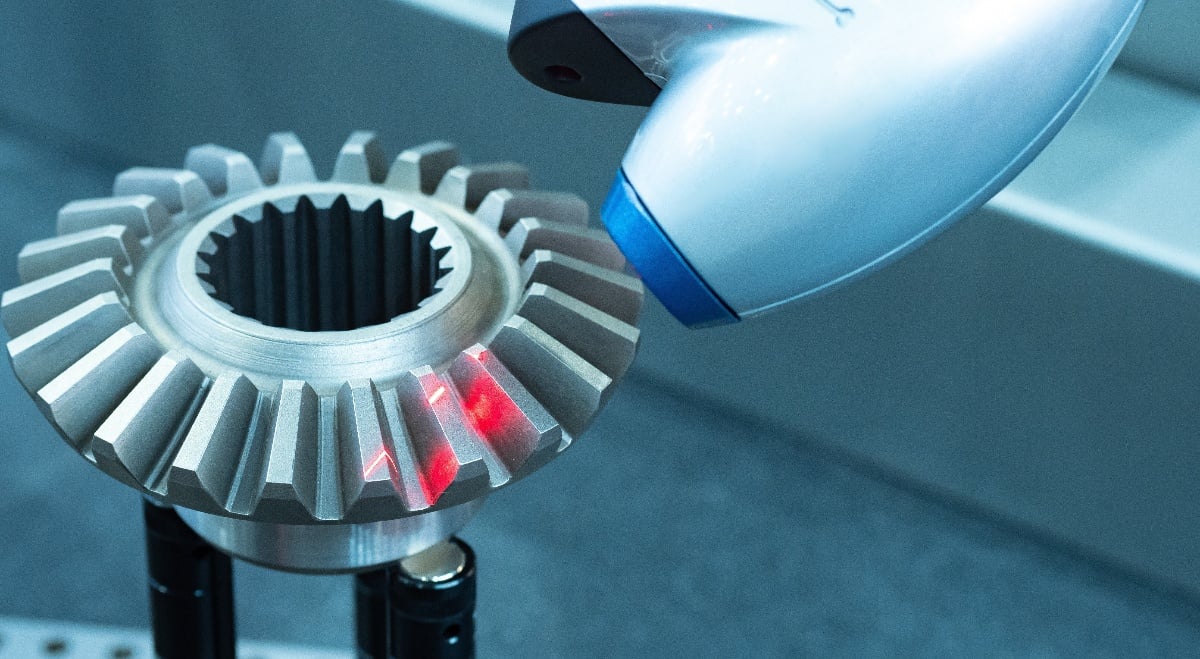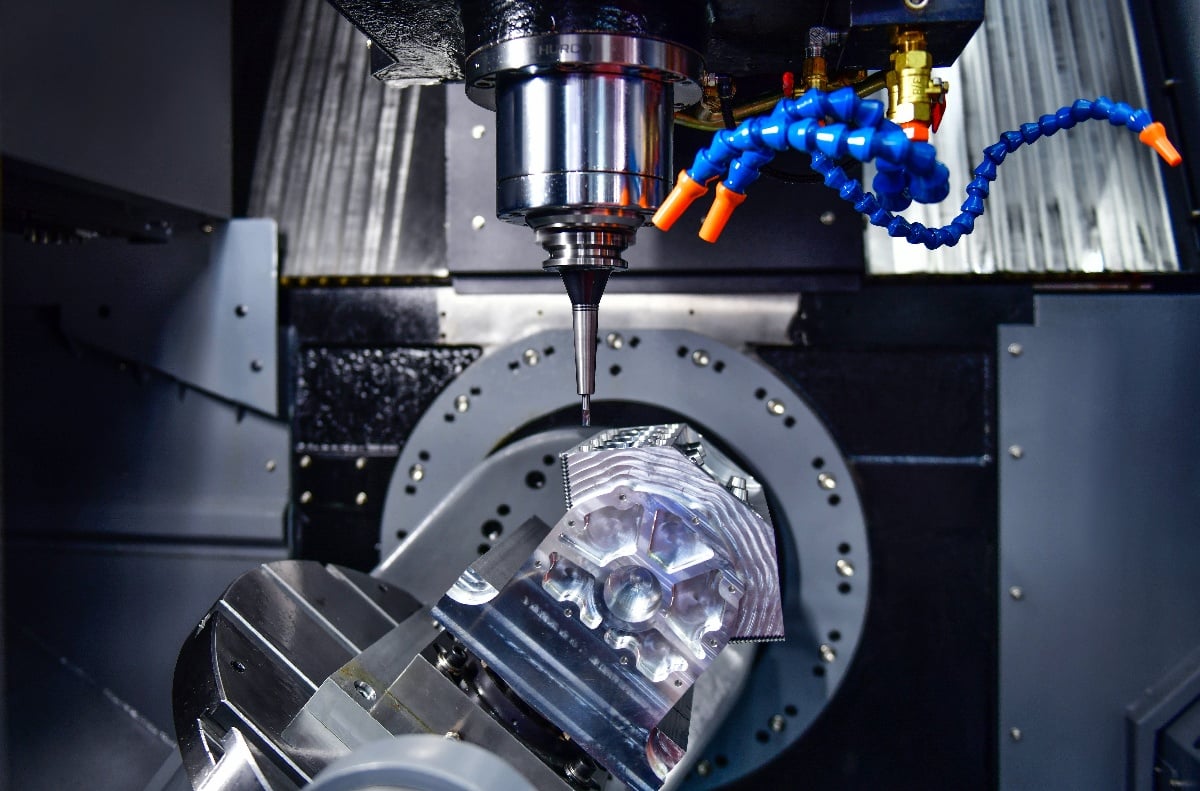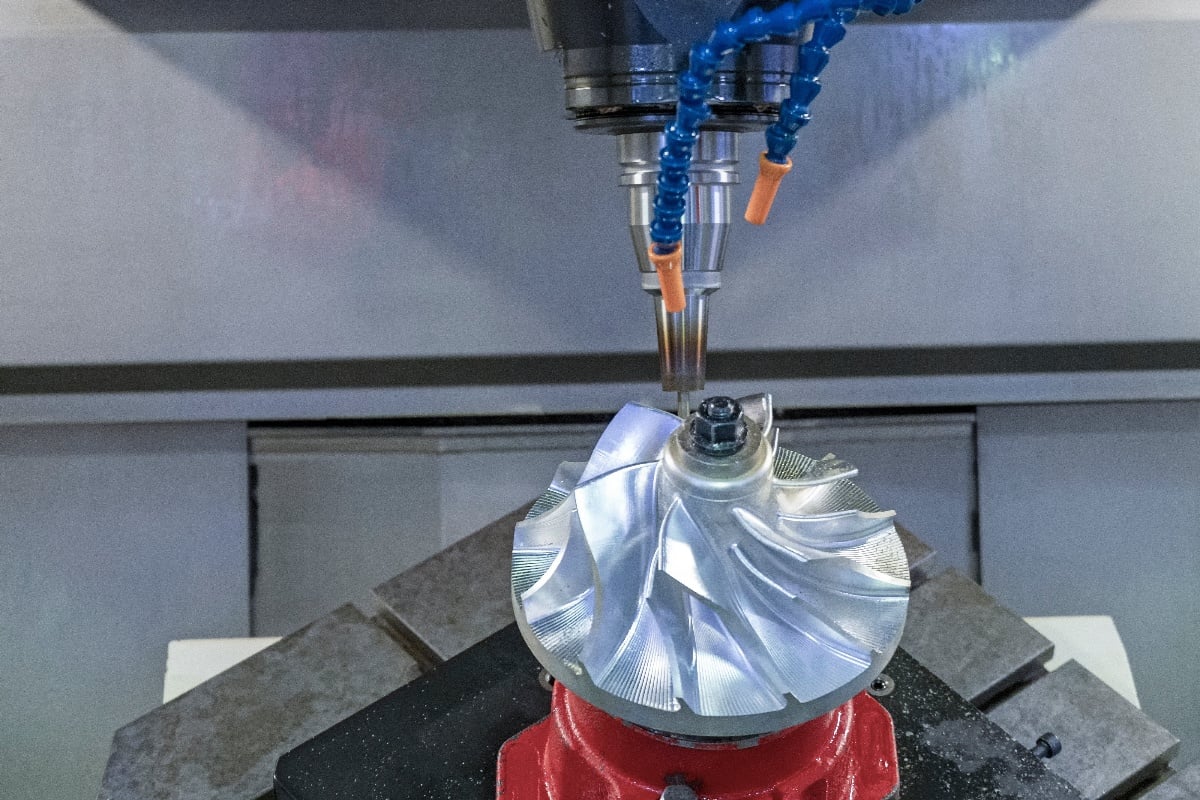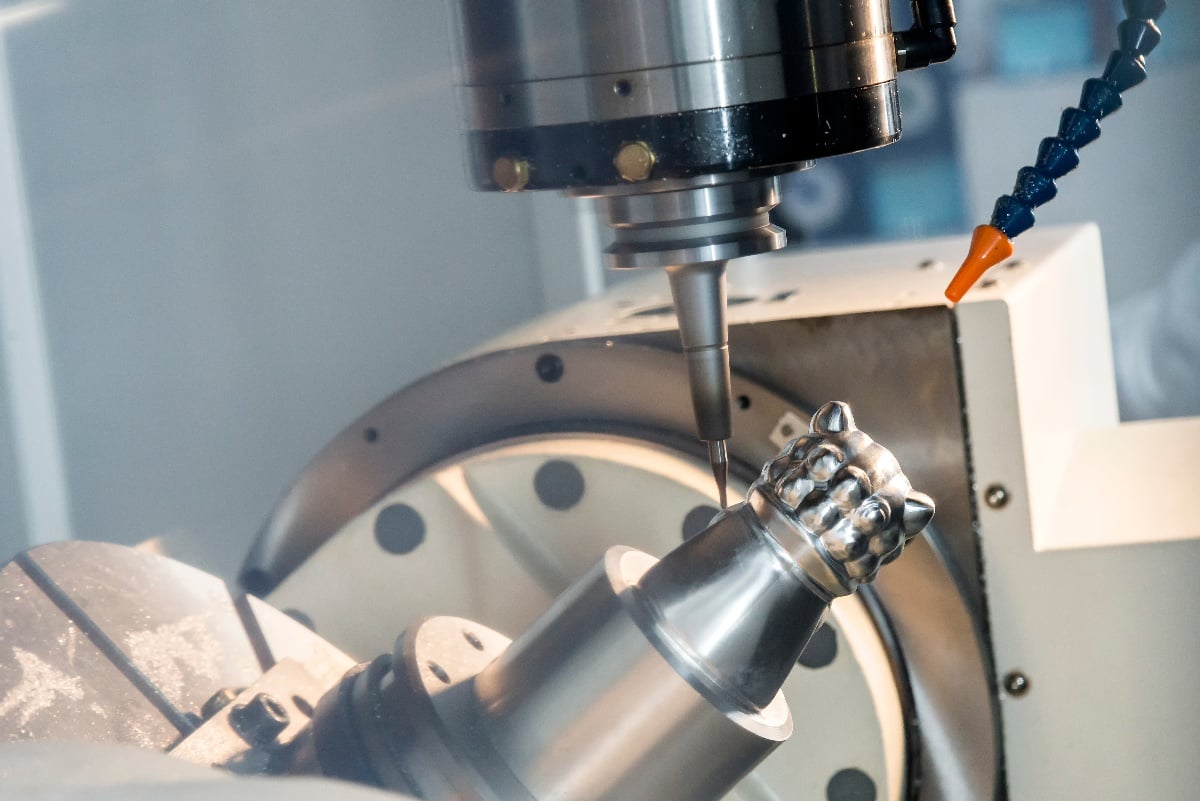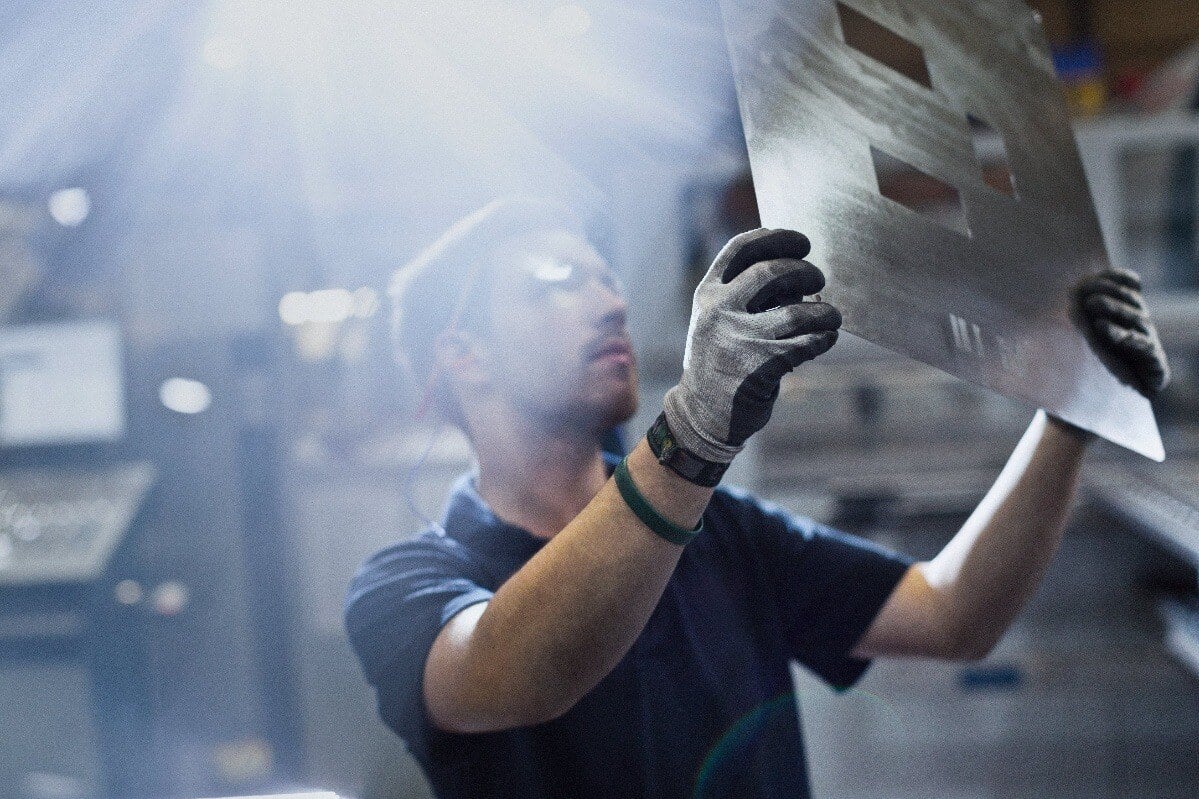Milling is a machining process where a rotating cutting tool removes material from a stationary workpiece. There are two main types of milling machines: vertical and horizontal. Each milling machine has its own advantages and disadvantages for specific applications. When selecting a certain type of machining operation or design feature consider your unique needs and equipment limitations. The more axes required to complete a part, the higher the complexity and cost.
HORIZONTAL MILLING SERVICES
Horizontal milling machines have horizontally positioned spindles where the cutting tool is mounted. This spindle can move in three axes, and a rotary table with work-holding operates perpendicular to the spindle.
HORIZONTAL MILLING ADVANTAGES
-
High-volume production: Horizontal mills can produce more final products than vertical mills because of their integrated pallet changer and 4th Axis Tombstone.
-
Reduced setups: With the added axis of travel, more than 3 faces of the workpiece can be machined in a single setup.
-
Increased accuracy: With the ability to integrate multiple faces of cutting into one setup, much more accurate multi-planar positional accuracy can be achieved, which is essential to high-quality machined products.
HORIZONTAL MILLING APPLICATIONS
-
High-volume, complex milling projects
-
Milling multiple sides
-
Projects with oversized or heavy materials
VERTICAL MILLING SERVICES
Vertical milling can also be referred to as 3-axis milling. The X & Y-axis are built into the work-holding table. The table can move forward and backward, left and right. The Z-axis is vertical (up and down), where your cutting tools mount. All milling machines have a complex gearing system that creates a rotational force called a spindle. The spindle applies torque to the mounted tool and the table moves underneath the spindle to position the raw material appropriately to sculpt the desired end-geometry. There are two types of vertical milling machines: a turret milling and a bed milling machine. Turret milling machines have tables and spindles that can move parallel or perpendicular to the axis. This maneuverability makes it quicker and more versatile than bed-milling machines. The spindle can move up and down in bed mills, but the table can only move along the horizontal axis.
VERTICAL MILLING ADVANTAGES:
- Lower Upfront Cost: Vertical mills are less expensive than horizontal mills, which allows manufacturers to pass on savings to customers.
-
Ease of Use: Vertical mills are easy to operate because the automated CNC technology is user-friendly and simple to learn. Vertical mills are also more popular than horizontal mills across industries, so more operators are familiar with vertical milling technology.
-
Fast Turnaround: Vertical mills are quick and efficient, especially for short-run production of small parts.
VERTICAL MILLING APPLICATIONS
-
Large plate metal fabrication
-
Quick, low-volume milling projects
-
Milling a single side, such as large metal stock or sinking dies
VERTICAL & HORIZONTAL CNC MILLING SERVICES AT PRO-TYPE INDUSTRIES
Vertical milling is a less expensive option, but its production cycle times are longer. Horizontal milling is best suited for large quantities and complex tasks but has higher production costs. Pro-Type Industries offers both vertical and horizontal CNC machining services and can help you decide on the best method for your project. Get in touch with us today to learn how Pro-Type can support your project needs with custom parts and services.

